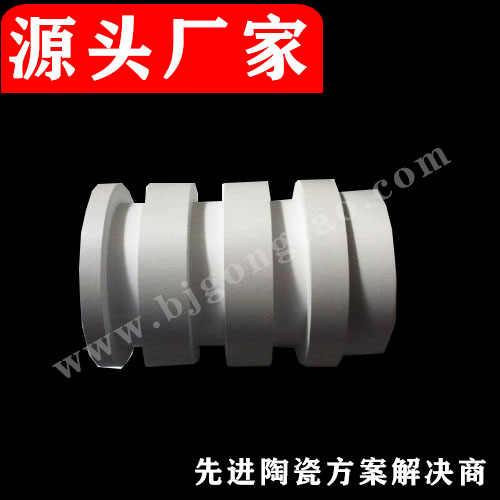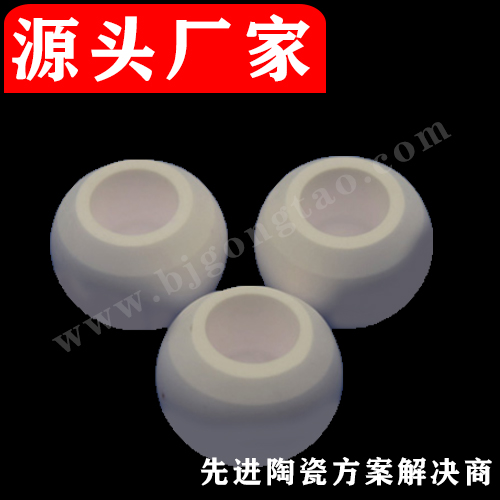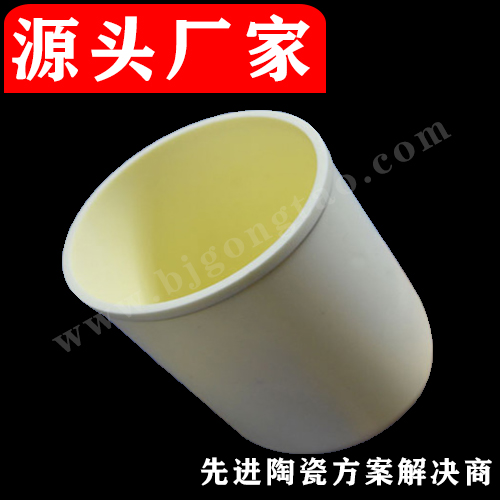
Suzhou Kaifa New Material Technology Co., Ltd.
Email:heqing@szkfxc.com
Email:sales@szbknm.com
Email:bkxc.bonnie@gmail.com
Boron carbide ceramic nozzle and its application
Nozzle, NOZZLE in English, also known as nozzle and nozzle in Chinese. The nozzle is widely used in daily life, industrial production, agricultural production and military equipment. It is a very critical component in spraying, spraying, oil spraying, sand blasting, spraying and other equipment, and plays an important role.
The material of the nozzle is from stainless steel, plastic to silicon carbide, polytetrafluoroethylene, PP (engineering plastic), aluminum alloy and tungsten steel, ceramics, etc. The application range is generally used in automobiles, electroplating, surface treatment, high pressure cleaning, dust removal, cooling, Desulfurization, humidification, mixing, gardening and other industries (Figure 1).

1. FIG nozzle material types
II classification nozzle
There are many classification standards for nozzles. The nozzle classification can be classified according to the function, material, industry and shape of the nozzle.
(1) According to the nozzle function, it can be roughly divided into: spray nozzle, oil spray nozzle, sand blast nozzle, and special nozzle;
(2) Classified by material, it can be divided into: metal nozzle, plastic nozzle, alloy nozzle, ceramic nozzle;
(3) According to industry classification, it can be divided into: petrochemical nozzles, agricultural nozzles, textile nozzles, papermaking nozzles, printing nozzles, environmental protection (desulfurization, denitration, denitrification, dust removal, etc.) nozzles, spray nozzles, steel metallurgy nozzles, electronic nozzles, Food nozzle
(4) According to the shape, it can be divided into hollow cone nozzle, solid cone nozzle, square nozzle, rectangular nozzle, ellipse nozzle, fan nozzle, column flow (direct current) nozzle, two-fluid nozzle, multi-fluid nozzle and so on.
The factors for selecting the nozzle are flow rate, pressure, spray angle, coverage, impact force, temperature, material, application, etc., and these factors are often involved and restricted. The performance of the nozzle is related to the material, process and technology of the nozzle, but in some special environments that require high temperature resistance and corrosion resistance, the material performance requirements of the nozzle are extremely high.
The nozzles of various materials mainly include: metal nozzles, plastic nozzles, alloy nozzles, ceramic nozzles, etc. (Figure 2).

Figure 2. Nozzles of various materials
(1) The metal nozzle occupies an important position in the field of industrial nozzles, and is also widely used in industry. Metal nozzles occupy a relatively large share in the nozzle market. The number of domestic manufacturers of nozzles is increasing, but domestic technology is far from foreign technology, and most of them still use imported nozzles. Metal nozzles have great difficulties in production due to their excessive hardness. China still needs a lot of talents in mechanical research and development.
(2) Plastic is an important organic synthetic polymer material, which is widely used. The plastic nozzle is light in weight, chemically stable, and will not rust; good impact resistance; has good transparency and wear resistance; good insulation, low thermal conductivity; general moldability, coloring, and low processing cost; However, plastic nozzles have poor heat resistance, large thermal expansion rate, and easy to burn; poor dimensional stability and easy to deform; poor low temperature resistance, become brittle at low temperature, and easy to aging; some plastic nozzles are easily soluble in solvents.
(3) Alloy is a substance with metallic properties synthesized by two or more metals and metals or non-metals through a certain method. Generally obtained by melting into a uniform liquid and solidification. According to the number of constituent elements, it can be divided into binary alloy, ternary alloy and multi-component alloy. The advantages of cemented carbide nozzles: corrosion resistance, long service life, excellent performance, high cost performance, and not easy to wear.
(4) Since the ceramic nozzle was introduced to China in the 1990s, it has been continuously improved and updated. Mainly improved from two aspects of shape and material: 1) Shape: The shape of the ceramic nozzle has gradually developed from the earliest spiral type, large volume, two-turn spray, to spiral type, vortex type, small volume. 2) Materials: The materials have gradually evolved from oxide ceramics to nitride ceramics and carbide ceramics.
Ceramic nozzles mainly include the following material nozzles:
(A) Oxide ceramic nozzle
Oxide ceramic nozzles (referring to alumina and zirconia materials) (Figure 3) . Since the performance of oxide ceramic nozzles is not as good as nitride ceramic nozzles and carbide ceramic nozzles, it has been gradually eliminated. The mainstream products of the market are nitride ceramic nozzles and carbide ceramic nozzles.

Figure 3. Oxide ceramic nozzle
(B) Nitride ceramic nozzle
The nitride ceramic nozzle (referred to as silicon nitride combined with silicon carbide material) has the advantages of high hardness, strong wear resistance, advantages and disadvantages, and too hard material to make a spiral nozzle.
(C) Carbide ceramic nozzle
Carbide ceramic nozzles (refer to silicon carbide, boron carbide materials), carbide ceramics have the characteristics of high temperature resistance, oxidation resistance, high strength, extreme cold and extreme heat resistance, good thermal shock resistance, etc. Therefore, the advantages of carbide nozzles are high hardness, With good ductility, it can be used as a spiral nozzle or a vortex nozzle.
Among them, silicon carbide (SiC) ceramic nozzles can be used in power plant desulfurization to remove sulfur dioxide and some polluting gases in power plant flue gas. Coal-fired power plant flue gas and coal-fired combined cycle gas have a common task for gas turbine combustion, namely Desulfurization and denitrification (and of course dust removal). The flue gas discharged from the power plant without desulfurization and denitrification directly pollutes the atmospheric environment, and the combined cycle gas will harm the hot end parts of the gas turbine without purification treatment. Its exhaust also pollutes the environment.
Ceramic nozzles are the key components of thermal power plants, large boilers, and complete sets of desulfurization and dust removal devices. The domestically produced reaction sintered silicon carbide desulfurization and dust removal nozzles gradually replace imported products. At the same time, it has excellent performances such as high strength, high hardness, strong corrosion resistance, severe wear, and high temperature resistance. It has a long service life under harsh conditions. The silicon carbide spiral nozzle is the most distinctive one among many nozzles. As the spiral body becomes smaller continuously, the slurry continuously changes its direction after being tangent and collided by the spiral line and is sprayed into a concentric cone shape, and the liquid is not hindered in the passage from the nozzle cavity to the outlet. And it still has very high absorption efficiency under very low operating pressure, which has been widely recognized by the desulfurization system.
Boron carbide ( B 4 C ) ceramic nozzles (Figure 4) can be used as gun nozzles in the military gunpowder industry. Boron carbide is extremely hard and wear-resistant, does not react with acid and alkali, resistant to high and low temperature, high pressure resistance, density ≥2.46g/c m³ ; microhardness ≥3500kgf/m ㎡ , bending strength ≥400MPa, melting point 2450℃ . The boron carbide nozzle has the above characteristics of high wear resistance and high hardness. It will gradually replace the known sandblasting nozzles of cemented carbide, tungsten steel, alumina, zirconia, silicon nitride, silicon carbide and other materials.

Figure 4. Schematic diagram of boron carbide ceramic nozzle and its structure
Boron carbide ceramic nozzles can also be used in water cutting technology. Water cutting technology is now widely used in various industries. Waterjet uses this technology to make water like a knife. How to control the water jet The nozzle can play a decisive role in the cutting range to perfectly cut. The high-pressure water jet device is centered on the nozzle, because the nozzle is a direct device to form a water jet, and the effect it can achieve directly affects other parts of the system. Small accessories cannot be ignored because they focus on the main device. Small accessories often play a vital role. The nozzle is an important element of the water jet device, which not only controls the cutting speed of the water jet but also restricts the other components of the system.
This information originates from the Internet for academic exchange only. If infringement please contact us to delete immediately





